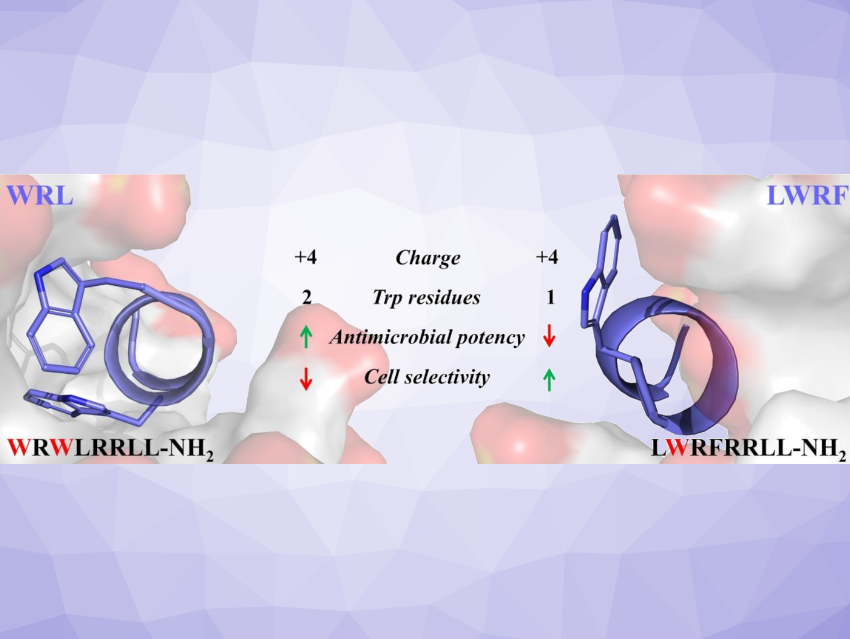Antibiotic resistance is an important concern for global health. New classes of molecules with antimicrobial activity other than “traditional” antibiotics are urgently needed. Antimicrobial peptides (AMPs) could be one option. They generally work by disrupting the membranes of bacterial cells, killing the microbes. AMPs can show broad-spectrum antimicrobial activities with a reduced tendency to induce resistances. Tryptophan residues in the peptides can provide useful properties such as a balanced hydrophobicity and good membrane binding.
Priyadarshi Satpati, Sunanda Chatterjee, Indian Institute of Technology Guwahati, Assam, India, and colleagues have developed two tryptophan-containing broad-spectrum cationic octapeptide antimicrobials, called WRL and LWRF. This team used experimental techniques such as biophysical assays, and spectroscopic techniques as well as molecular dynamics (MD) simulations to study the two peptides. They found that the two AMPs show strong, salt-tolerant antimicrobial activity against gram-positive, gram-negative, and fungal pathogens, as well as non-cytotoxicity towards mammalian cells and the expected membrane-disrupting mechanism of action. WRL, which contains two tryptophan residues, one of them N-terminal, is more potent, with better salt tolerance and faster pathogen-killing kinetics over LWRF, which has a single, non-terminal tryptophan residue.
Binding studies between the peptides and a microbial membrane mimic showed that the two tryptophan residues of WRL were located in hydrophobic pockets of the membranes, leading to improved binding in comparison with LWRF, where the single tryptophan was exposed to water. Thus, the work demonstrates that the number and position of tryptophan residues in otherwise similar membrane-active AMPs can determine the extent of microbial membrane binding, and thus, their antimicrobial potencies.
- De-Novo Design of Tryptophan-Containing Broad‐Spectrum Cationic Antimicrobial Octapeptides,
Tanumoy Sarkar, S. R. Vignesh, Pradeep Kumar Sundaravadivelu, Rajkumar P. Thummar, Priyadarshi Satpati, Sunanda Chatterjee
ChemMedChem 2024.
https://doi.org/10.1002/cmdc.202400566




